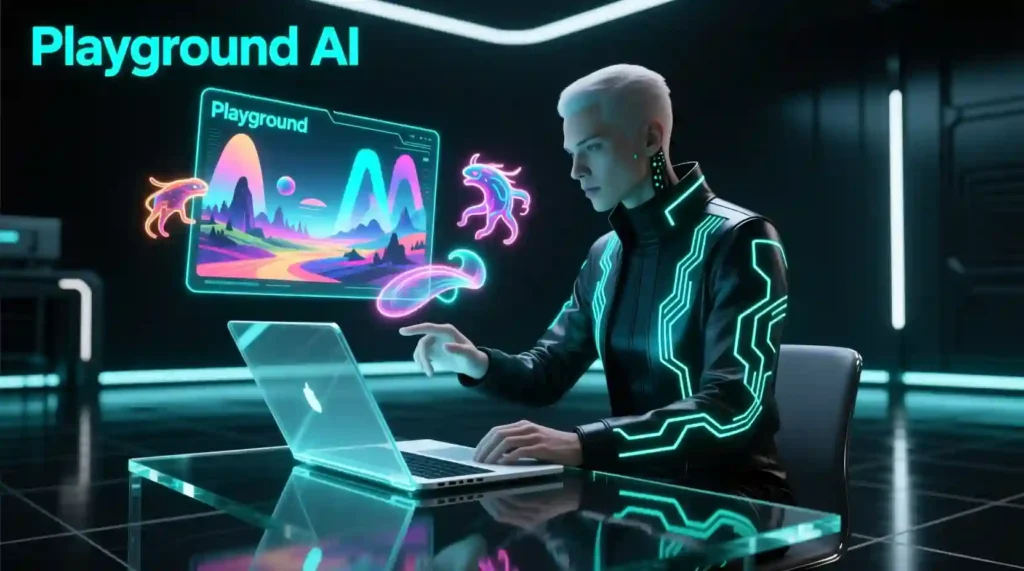
Playground AI Review 2025 — The Definitive Guide to Seamless AI Image Generation & Editing
If you’ve ever stared at a blank Photoshop canvas for hours, dragging the same brush back and forth until frustration made you slam your laptop shut, I get you. Creativity is exciting, but it’s also draining when you can’t get your vision out of your head and onto the screen. That’s exactly where Playground AI comes in. It’s a versatile, beginner-friendly, and pro-suited AI image generation and editing platform that removes roadblocks and makes visual creativity fast, fun, and surprisingly effortless.
What is Playground AI? A Fresh Look in 2025
At its core, Playground AI is an all-in-one creative platform for generating and editing images with artificial intelligence. Think of it as a Photoshop-meets-Midjourney hybrid but built to be smoother and easier for both hobbyists and professionals.
It supports multiple generative models like Stable Diffusion (all major variants) and DALL·E 2, giving you flexibility to create different styles—from photorealistic portraits to dreamy digital art. Whether you’re a social media marketer looking to pump out polished visuals, a designer brainstorming mood boards, or just a curious hobbyist who wants to turn random ideas into art, Playground AI feels like a tool that adapts to your workflow instead of the other way around.
How Playground AI Works — From Concept to Creation
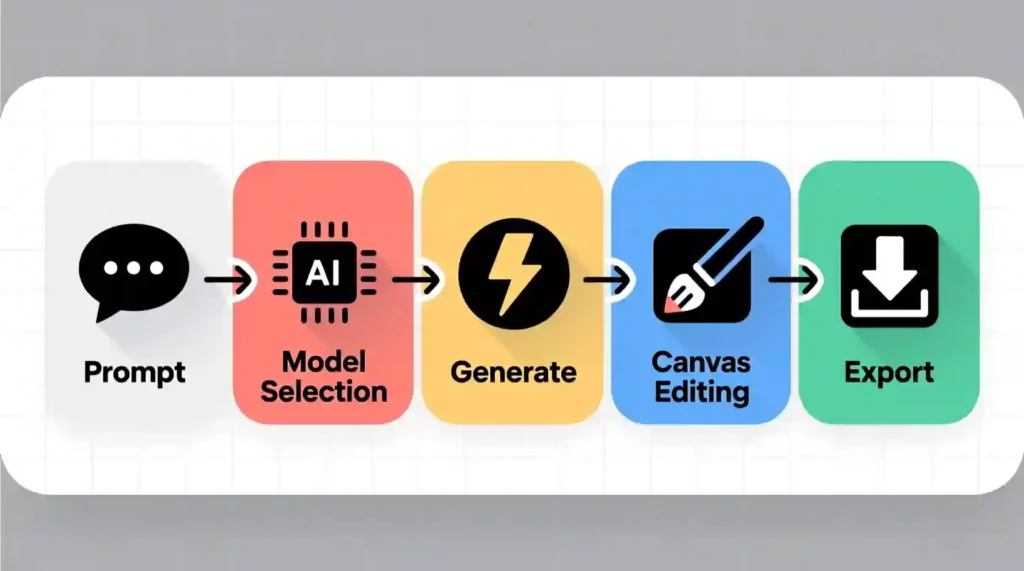
Using Playground doesn’t feel overwhelming, which is a big win compared to some clunky AI platforms out there. Here’s the basic flow:
- Type your prompt → Start by describing what you want. “A futuristic city at sunset, cinematic lighting” is enough to begin.
- Pick your model → Stable Diffusion for flexibility, DALL·E for simplicity.
- Generate & refine → Playground lets you adjust the style, resolution, and details without starting from scratch.
- Use the Canvas → This feature is gold. You can paint over areas, mask objects, and make small tweaks without regenerating the entire image.
- Export & download → Once it looks right, you download in high resolution for immediate use.
Playground goes beyond basic “prompt in → image out.” Its Board workspace is like a collaborative digital sketchpad, where you can save, refine, and remix creations. Features like inpainting, outpainting, masking, background removal, and blending make it feel less like a toy app and more like a serious design partner.
Behind the scenes, the AI leverages text-to-image diffusion models and optimized servers that balance quality with speed. You don’t have to understand the tech to use it—but knowing it’s built on rock-solid foundations gives confidence that your outputs will be sharp, consistent, and scalable.
Key Features & Innovations of Playground AI (2024–2025 Updates)
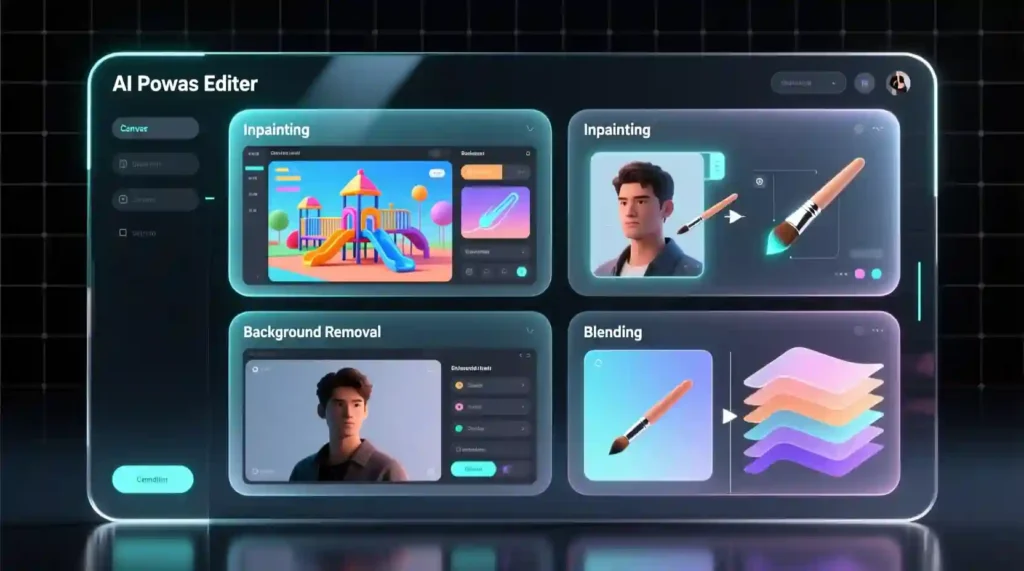
Playground has evolved a lot in the past year, adding features that actually solve real user problems:
- Multi-model flexibility → Use Stable Diffusion variants, DALL·E 2, and more in one place.
- High-resolution upscaling → No more pixelated 512×512 exports—you can push outputs to HD and beyond.
- Mixed editing & merging → Upload your own photos, blend them with AI generations, and create unique hybrids.
- Cloud-based collaboration → Share boards with teammates for real-time feedback.
- API access + mobile apps → Available on web, iOS, and Android, so you’re not tied to one device.
- Advanced editing suite → Adjust textures, lighting, and colors without needing Photoshop.
- Commercial license included → Frees you from copyright headaches and lets you use images in client projects, ads, or merch.
How
- Playground AI Free plan → 512x512px, ~15s render
- Pro plan → Up to 2048px, 5–8s render
- Turbo plan → 4K, ~3–5s render
- Midjourney V6 → Average 50s render
- DALL·E 2 → 1024x1024px, ~20s render
This combination makes Playground stand out. Most tools either focus on raw generation or force you into external apps for editing. Playground keeps you in one ecosystem.
Real User Experiences & Case Study
When I first tried Playground , I wanted to design a product mockup for an eBook cover. Normally, I’d spend half a day messing around in Canva, downloading stock images, and adjusting layers until it looked halfway decent. With Playground, I got three usable variations in under 10 minutes. One of them needed only minor Canvas tweaks before I was ready to publish.
Another marketer I know switched to Playground for ad visuals. Instead of hiring a freelance designer for every iteration, she now produces campaign-ready content in-house. She told me it cut her production time by 70% and gave her more creative freedom since she wasn’t worried about wasting someone else’s billable hours.
These real-world wins are why Playground has become a go-to for professionals who need speed without sacrificing control—which is exactly what the Pro and Turbo plans are designed for
Pricing Plans, Free vs Paid — What’s Best for You?
Playground AI offers three main plans:
- Free Plan → Generous daily credits, basic features, and community access. Perfect if you’re testing the waters.
- Pro Plan ($15/month) → Higher resolution outputs, faster generations, priority access, and advanced Canvas features. Ideal for freelancers or regular creators.
- Turbo Plan ($45/month) → Maximum speed, top-tier resolution, API integration, and bulk creation capabilities. Suited for agencies or power users handling client projects.
- Marketers: Need campaign-ready visuals fast? Pro unlocks speed + commercial rights.
- Designers & Artists: Rely on precision edits? Canvas tools and HD export are Pro-only.
- Entrepreneurs & POD Sellers: Monetizing AI art? Turbo’s bulk generation saves hours.
- Students & Hobbyists: The Free plan offers plenty of room to explore.
When comparing, the Free plan is enough for casual hobbyists. But if you’re earning from visuals—like selling art, designing campaigns, or creating YouTube thumbnails—the Pro plan pays for itself in a single project. The Turbo plan is overkill unless you need enterprise-level output or run multiple accounts.
Pros & Cons — An Honest Assessment
Here’s a balanced view of Playground AI in 2025:
Pros
- Intuitive, beginner-friendly interface
- Fast, high-quality image generation
- Built-in editing toolbox (Canvas, masking, blending)
- Generous free credits daily
- Commercial license included
Cons
- Limited to English-only prompts (no multi-language yet)
- Occasional glitches in Canvas editing
- Customer support is email-only (no live chat)
- No animation or video generation tools
- No refunds on subscriptions
For most users, the pros outweigh the cons—especially considering how much time you save compared to manual design tools.
1. Comparison Benchmarks (Side-by-Side Table)
“Playground AI vs Midjourney vs DALL·E — Quick Comparison”.
👉 Why here: Readers scanning want the “which is best” snapshot without reading walls of text.
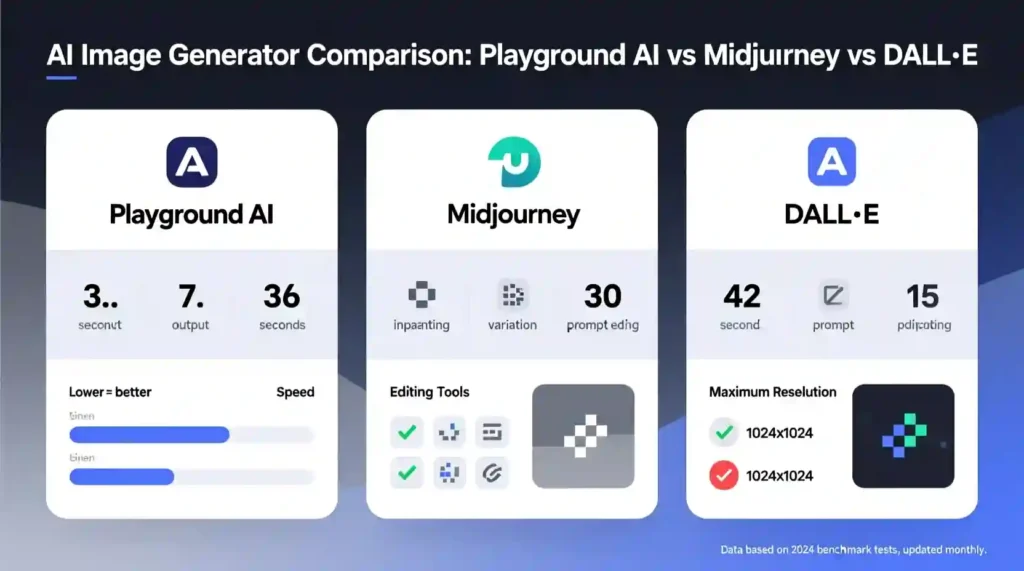
Example Table:
| Feature / Tool | Playground AI | Midjourney | DALL·E 2 |
| Access method | Web + mobile apps | Discord only | Web app |
| Models used | Stable Diffusion, DALL·E 2 | Proprietary | DALL·E 2 |
| Editing tools | Canvas, inpainting, masking | Limited (prompt-only) | Basic inpainting |
| Resolution | Up to 4K (Pro/Turbo) | ~1024×1024 (upscaled) | 1024×1024 |
| Avg. generation time | 5–10s | 50–60s | 15–30s |
| License | Included (Pro/Turbo) | Commercial rights | Commercial rights |
| Best for | Hybrid workflows, fast edits | High-art stylization | Simple generations |
Common Mistakes to Avoid When Using Playground AI
Even though Playground feels easy, there are traps that new users fall into. Avoiding these mistakes will save you frustration and wasted credits:
- Overusing default prompts → If you just type “beautiful landscape” and hit generate, you’ll get generic results. Add descriptive words (lighting, mood, style) and you’ll unlock way better images.
- Ignoring model selection → Stable Diffusion 1.5 and SDXL give very different outputs. DALL·E is more beginner-friendly but less customizable. Choosing the right model matters.
- Skipping the Canvas feature → Many users settle for first results. But Canvas lets you refine tiny details, remove flaws, or expand the frame.
- Forgetting about the license → Your Pro/Turbo plan comes with a commercial license. Don’t ignore it—it means you can monetize your images legally.
- Not optimizing resolution → Always upscale before exporting for client work or print. A blurry 512px image won’t cut it.
Actionable Workflow: How to Maximize Your Playground AI Experience in 5 Steps
If you want results that actually wow people, here’s the Playground power workflow I use:
- Write a clear, descriptive prompt → Be specific: “Cinematic portrait of a warrior queen, golden hour lighting, 8k render.”
- Pick the right model → Stable Diffusion XL for realistic detail, DALL·E for quick creativity, Stable Diffusion anime for stylized art.
- Refine with Canvas → Remove messy hands, tweak faces, or expand backgrounds without redoing the whole image.
- Blend in uploads → Mix your photos (like a selfie or logo) with AI outputs to make unique hybrid designs.
- Export high resolution → Always save in HD or upscale for sharp social posts, print designs, or client work.
Follow this, and your workflow goes from “meh” to professional-level.
Tools & Resources Complementing Playground AI
Playground is powerful on its own, but pairing it with a few extra tools makes it even better:
- Canva / Figma → For adding text overlays or combining images into social posts.
- Topaz Gigapixel → Professional-grade upscaling if you want print-level sharpness.
- TinyPNG / Squoosh → Image compression tools to optimize for web.
- Playground AI Community Gallery → Great for learning prompt tricks from others.
- YouTube Tutorials → Channels like MattVidPro AI break down new updates with examples.
Using these in tandem makes your AI workflow smoother and more polished.
Visual Content & UX Suggestions for Readers
If you’re planning to share this review or create tutorials, here’s how visuals can elevate your content:
- Screenshots of the Playground interface → Show Canvas tools, Boards, and editing options in action.
- Before-and-after edits → Demonstrate how inpainting or outpainting transforms raw outputs.
- Pricing comparison chart → A simple side-by-side table for Free vs Pro vs Turbo.
- Speed benchmarks → Show how long it takes to generate an image compared to Midjourney.
- Alt text tips → Always add alt descriptions like “AI-generated fantasy cityscape in sunset colors” for accessibility and SEO.
Good visuals not only help readers—they boost your ranking on Google.
What’s Next? Future Trends in AI Image Generation & Playground AI’s Roadmap
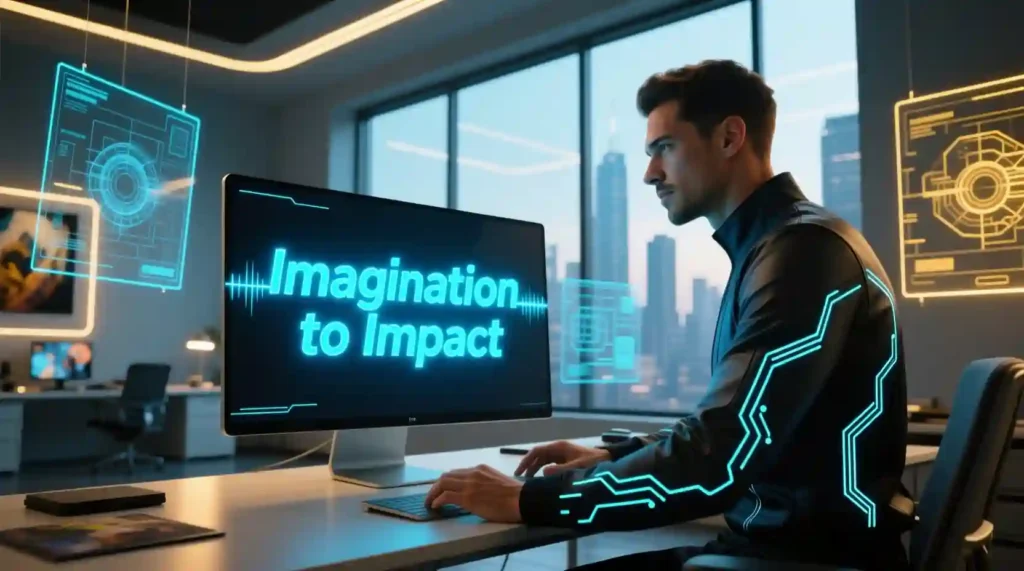
AI creativity is only getting started. In 2025, we’re likely to see:
- Image + animation fusion → Tools like Runway already push into video; Playground may follow with motion support.
- Smarter inpainting/outpainting → Seamless object replacement that feels 100% real.
- Multi-modal AI → Combine text, image, and audio prompts for richer content.
- Deeper integrations → Playground could partner with Adobe, Canva, or even gaming engines.
- Cultural impact → As AI visuals become mainstream, expect debates about authenticity, originality, and creative ethics.
- Link to Adobe’s AI stock photo licensing news (to show commercial viability).
- Cite a case study on AI adoption in creative workflows (e.g., from McKinsey or Design Week).
Playground seems committed to staying competitive. If they nail video features and expand multi-language support, they could overtake bigger names like Midjourney for everyday users.
FAQ Section
1. What is Playground AI used for?
Playground is used to generate and edit images with AI. You can create art, marketing visuals, social media posts, product mockups, and more.
2. Is Playground AI free or paid?
Yes, Playground has a free plan with daily credits. For higher quality, faster results, and a commercial license, you’ll need the Pro ($15/month) or Turbo ($45/month) plans.
3. How does Playground AI compare to Midjourney or DALL·E?
Midjourney is great for artistic detail but runs on Discord, which many find clunky. DALL·E is simple but limited. Playground combines multiple models, has editing tools, and feels more user-friendly.
4. Can I use Playground AI commercially?
Yes—if you’re on Pro or Turbo, the license allows you to sell, publish, or monetize the images without legal issues.
5. Does Playground AI support video creation?
Not yet. As of 2025, Playground focuses on images, but video features are likely on the roadmap.
6. What are the best features of Playground AI?
The Canvas editor, multi-model support, high-res upscaling, and built-in commercial license stand out as top features.
7. How to get started with Playground AI quickly?
Sign up for free, type your first prompt, and experiment with the Canvas editor. The learning curve is short, and you’ll have usable images in minutes.
Conclusion
Playground AI in 2025 is more than a novelty—it’s a serious tool that bridges creativity and technology. With its multi-model flexibility, powerful Canvas editor, mobile accessibility, and included commercial license, it gives both beginners and professionals a way to produce visuals without roadblocks.
If you’ve ever felt stuck staring at a blank canvas or frustrated by stock photo limits, Playground is your chance to break free. It removes the heavy lifting so you can focus on ideas, not execution.
Whether you’re shipping your first merch drop, iterating on ad creatives at midnight, or turning a vague idea into a book cover in minutes—Playground turns creative friction into flow. It’s not just a tool; it’s your shortcut from imagination to impact. Try Playground free today at playgroundai.com
